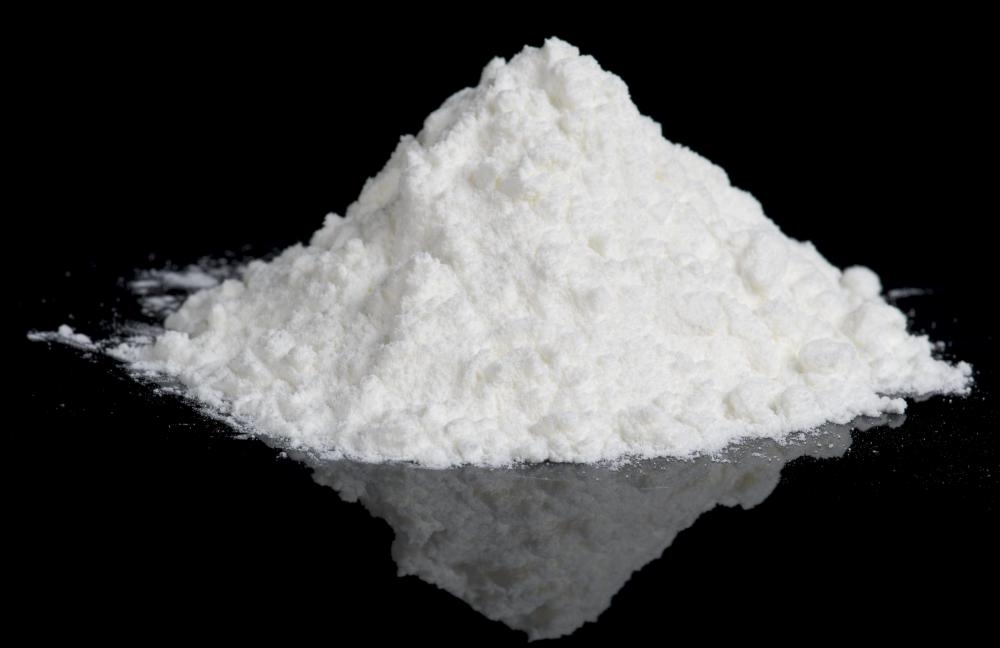At WiseGEEK, we're committed to delivering accurate, trustworthy information. Our expert-authored content is rigorously fact-checked and sourced from credible authorities. Discover how we uphold the highest standards in providing you with reliable knowledge.
What is Plaster of Paris?
Plaster of Paris is a type of plaster which can be used in art, architecture, fireproofing, and medical applications. When people think of “plaster,” they are often thinking specifically of plaster of Paris, although there are a number of different types of plaster on the market including lime plaster and cement plaster. Many art and construction supply stores sell plaster of Paris, and it can also be ordered through specialty companies.
This plaster is made by calcining gypsum, a process which involves exposing the gypsum to very high temperatures to create calcium sulfate and then grinding it into a fine white powder. When water is added to the powder to make a slurry, the slurry can be molded in a variety of ways, and as it sets, a firm matrix is created, creating a solid shape which is also very smooth. One advantage to plaster of Paris is that there is no volume loss, so casts made with this plaster are true to the size of the mold.

History seems to indicate that, despite the name, plaster of Paris was invented by the Egyptians. It was used as an artistic decoration in many Egyptian tombs, and the Greeks picked up the technique, using plaster in their own homes, temples, and works of art. Paris became synonymous with this type of plaster in the 1600s, thanks to a large deposit of gypsum which made it easy to produce plaster of Paris. The substance was also used extensively in fireproofing, giving Parisian homes a distinctive appearance.

In art, plaster of Paris can be used to make sculptures, and test molds for bronze and other metal castings. Plaster can also be used to make molds which will be very dependable while withstanding high temperatures. Plaster can also be used as an architectural feature, as for example in the case of plaster moldings mounted on doorways and window frames.

As a building material, plaster of Paris can be used to increase the fire resistance of a structure. It is often applied as a coating over other construction materials like metal and wood. Doctors have historically used plaster of Paris to make smooth, hard casts for broken limbs. This material can also be utilized in criminal investigations, with plaster of Paris being used to make molds of footprints, tire treads, and other markings. Because the plaster will not shrink as it dries, it can be used to create a court-admissible cast as well as a reference which can be used in an investigation.
AS FEATURED ON:
AS FEATURED ON:













Discussion Comments
I had to do an experiment with plaster of paris. Well, my question is what happens to plaster of paris if there is no balloon in it? Also, what happens to the plaster if there is a balloon? I wrote that with the balloon in it the top of the plaster cracked. I don't know my other question. Please help if you know.
@Emilski - I am really surprised at how strong plaster of paris can be and how it can become very rock like.
One thing I am wondering though is what else can plaster of paris be used for besides what has been mentioned so far?
I am wondering if it can be used as a seal for things, like windows, or if it can have more practical purposes besides creating shapes?
Also can plaster of paris get wet again after it has already hardened or will it be adversely affected by the moisture?
The plaster of Paris that is used for piñatas is really not in any thickness at all and does not give plaster of Paris due justice in how strong it can be.
When someone uses plasters of Paris, say for a crime scene foot print, they are using the real deal, that does not break real easy.
Plaster of Paris can be so strong that it can be made to be chiseled. This is quite a feat, considering that it is mighty difficult to create something strong enough that does not just shatter.
When I was younger, I always figured that plaster of paris was only used to make things, like piñatas, because they can break, without shattering into small fragments and provide some entertainment at parties.
Apparently though, there must be different thicknesses of plaster of paris, as it seems fairly easy to break a piñata, but a lot harder to break other things made of plaster of paris, such as sculptures or footprints taken at crime scenes.
What are the chemical properties of plaster of paris?
post something about plaster of paris used in dentistry.
@PinkPolo: this was one of my favorite activities as a child! In particular, I remember how much fun paper mache balloons were.
Paper mache balloons are made by blowing up a balloon and covering it with paper mache. Long after the balloon pops or deflates, the paper mache will preserve the spherical shape of the balloon. This paper mache balloon can be decorated for almost any occasion or interest—the only limit is your imagination!
Paper mache is also another plaster of paris type substance. It works well when making something simple and quick that doesn't need to last very long. By making a water and glue combination and soaking newspaper strips in it, you can make different sculptures and projects!
Post your comments